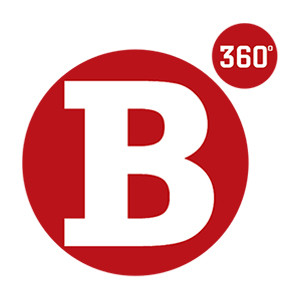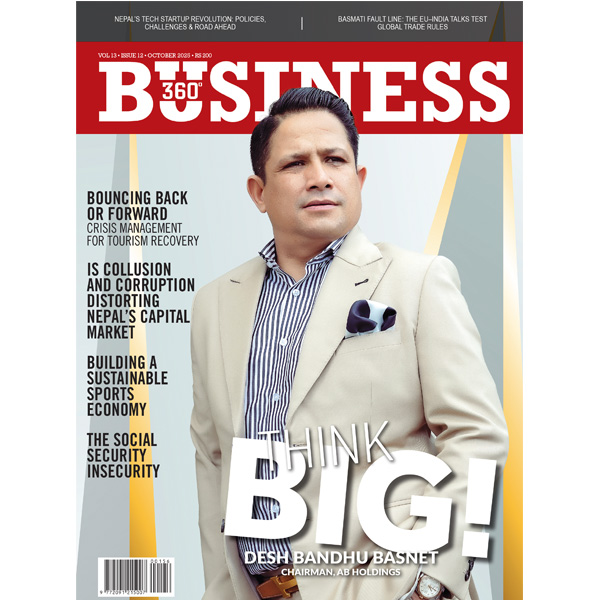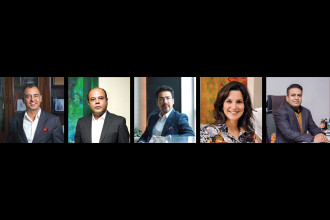-cover-1754643478.jpg)
It is more than a trade association; it is a coalition of committed leaders who are building the foundation for a future-ready mobility sector in Nepal.
The Nepal Automobile Importers and Manufacturers Association (NAIMA) is set to emerge as one of the most focused and strategic bodies in Nepal’s industrial landscape. At a time when the global automobile industry is undergoing seismic shifts towards cleaner energy, smarter systems and locally rooted supply chains, NAIMA stands out as a platform that seeks to balance aspiration with accountability. It is more than a trade association; it is a coalition of committed leaders who are building the foundation for a future-ready mobility sector in Nepal.
NAIMA’s mission is rooted in one clear goal: to foster a sustainable, inclusive and forward-looking mobility ecosystem that supports clean energy transitions, local value addition and consumer-centric reforms. Its vision is not limited to representing the commercial interests of automobile dealers and assemblers. Rather, it aspires to be a constructive policy partner, an advocate for long-term planning, and a credible voice in national economic transformation. The association sees mobility not just as a matter of transportation but as a core pillar of development.
The formation of NAIMA was prompted by a growing realisation that the automotive industry in Nepal had outgrown its traditional structures. As Ritu Singh Vaidya, President of NAIMA and Managing Director of VOITH, puts it, “As the industry evolved, it became clear that importers and manufacturers needed a dedicated platform. NAIMA was formed not to compete but to complement existing associations. We bring sharper focus to issues like policy reform, infrastructure development, safety and workforce training.” For her, mobility today goes far beyond selling vehicles, it involves shaping systems that are smarter, more inclusive and more responsive to people and the planet.
The association’s leadership reflects this philosophy. Comprising some of the country’s most prominent and experienced business figures, the NAIMA board brings a broad perspective, from passenger cars and commercial vehicles to luxury brands, clean energy solutions and local assembly. Each member brings decades of hands-on experience in navigating Nepal’s policy landscape, consumer trends and international partnerships.
Among them is Shekhar Golchha, Chairman of Golchha Group, who began with the relatively unknown Bajaj brand decades ago and today operates a network that spans nearly the entire country. “What we need now is a clear roadmap from the government just like Sri Lanka or Bangladesh to begin meaningful value addition. We are ready. What is missing is policy clarity,” he says. He also emphasises the importance of technical training and skill development. “Today’s vehicles, especially EVs and high-performance motorcycles, are not something you can fix without proper knowledge. Technicians need formal certification. That is why NAIMA is developing training programmes so that the industry can keep pace with global standards.”
Cabinet Shrestha, Managing Director of Agni Inc, has seen the auto industry shift from rugged overland vehicles of the past to today’s hybrid and electric alternatives. He notes that Nepal still lags in terms of vehicle ownership relative to its road reliance and believes policy should reflect this reality. “We need an auto policy that is relevant to our needs, not just a copy of other countries,” he says. “EV infrastructure is growing but not fast enough. Charging stations, skilled after-sales support and trained technicians must be developed together. NAIMA is working with stakeholders to make sure this growth is structured and sustainable.”
Hemant Golchha of Shangrila Motors, who represents global brands like Peugeot, Citroen and Leapmotor, agrees that stability is more important than short-term incentives. “Our tax and customs rules keep changing and that makes long-term planning very difficult,” he says. “What the industry needs is predictability, so we can invest confidently, maintain inventory properly and pass on the benefits to consumers.” For him, NAIMA is not just a lobbying group but a platform for ensuring quality across the board. “We need national benchmarks for safety, emissions and service. If we want to build consumer trust, those standards must apply equally to imported and locally assembled vehicles.”
That sense of shared responsibility is echoed by Suhrid Ghimire, Chairman of Continental Trading Enterprises, who believes the time has come for Nepal to move beyond import dependency. “We have come a long way from the reconditioned cars of the 1990s. Now we need to push for digitisation, smart traffic management, EV incentives and local assembly. NAIMA is ready to work with the government to develop policies that reflect the direction the world is moving,” he says. Ghimire is particularly vocal about NAIMA’s role in bridging the gap between innovation and regulation. “We can help define what counts as a plug-in hybrid, create standards for new technologies, and promote investment in digital tools, from online sales platforms to AI-based traffic solutions.”
Saurabh Jyoti, Chairman of Syakar Trading Company, adds a broader perspective rooted in decades of industry experience. “NAIMA’s value lies in its long-term strategic outlook. We are working toward a 10-year policy framework that ensures stability and transparency for all players, new and old. That is what will protect investments, encourage responsible practices and align us with global standards,” he says. He also believes NAIMA has a critical role in ensuring that all clean technologies, whether electric, hybrid or hydrogen, receive policy support. “The current focus is only on battery EVs. But if we really care about emissions and sustainability, we need to widen that definition.”
Nikunj Agrawal of Paramount Motors believes NAIMA is unique because it represents all sides of the automobile sector – importers, assemblers and even those looking to begin manufacturing in the near future. “Many importers have now stepped into local assembly, which is a great sign for Nepal’s industrial base. But for this to succeed, we need a policy framework that is supportive, consistent, and fair,” he says. “NAIMA is that bridge between government aspirations and industry execution.” He also believes that NAIMA’s consensus-driven approach helps ensure that policies reflect the broader interests of the sector, not just a few big players.
The diversity within NAIMA is further reflected in members like Udayan Kabra of Omni Group, who brings in the commercial vehicle perspective. “Even small changes in import duties or axle load regulations can have a huge impact on logistics companies and commercial operators,” he says. “What we need is consistency and a chance to plan ahead. Frequent policy shifts disrupt not just dealers, but customers too.” For Kabra, the strength of NAIMA lies in its ability to create a shared voice, even in a fragmented market. “Being on the board, I have seen that everyone gets a chance to speak and decisions are made collectively. That is how an industry platform should work.”
In terms of immediate policy goals, NAIMA has a clear agenda. It advocates for an 80/20 auto loan scheme to make vehicle ownership more accessible, a reduction in risk weight on auto loans to reflect low default rates and equal treatment for hybrid vehicles, which offer environmental benefits without needing additional infrastructure. Vaidya stresses that these are not just wish-list items, they are grounded in practicality. “We are not asking for unreasonable incentives. We are asking for consistency, predictability and a level playing field,” she says. “Policies need to be phased in properly. Sudden decisions hurt everyone.”
For members like Nirakar Shrestha of Laxmi Group, who recently began assembling Hyundai vehicles in Nepal, NAIMA’s relevance is only growing. “The dream is to manufacture in Nepal, not just for local use but for export someday. That will not happen unless policies are consistent and investment is protected,” he says. His view is that Nepal needs to reframe its thinking: vehicles are not luxury goods but essential infrastructure. “Most Nepalis do not have access to reliable public transport. In this context, a car or a bike is not a luxury, it is a necessity.”
The importance of consumer education is also not lost on NAIMA. Whether it is fuel efficiency, EV battery care, or road safety, the association sees itself as an awareness partner. “We want to work with schools, municipalities, traffic police and local governments to run education campaigns. This builds trust, not just in vehicles, but in the brands behind them,” says Shrestha.
Yamuna Shrestha of Cimex Group, who introduced BYD electric vehicles in Nepal, is also actively looking at how NAIMA can work with local governments in the federal context. “We have expanded to multiple provinces and the regulatory environment is changing. NAIMA has to represent the voice of members at both central and provincial levels. That is our next challenge,” she says. She is also keen to address policy confusion around plug-in hybrids, which she feels has left an important technology out of the conversation. “We plan to provide a clear definition to the government. Plug-in hybrids can be a bridge in our clean energy journey but they need the right policy recognition.”
Ultimately, what makes NAIMA unique is not just who it represents but how it operates. It is a member-led, committee-based association that values structure, communication and long-term vision. Whether it is preparing recommendations for next year’s budget, engaging with bilateral trade partners, or consulting on emissions standards, NAIMA functions as a credible, thoughtful and collaborative partner to the state.
As Vaidya says, “NAIMA is here to be a constructive partner to the government and a reliable voice for the public. We want to see Nepal become a leader in clean, smart and inclusive mobility. That will not happen overnight. But with consistent policies, united efforts and industry-government collaboration, we can absolutely get there.” For a country like Nepal, where transportation is deeply tied to everything from tourism to trade to urban planning, NAIMA represents more than just a trade body, it is helping write the roadmap for national progress, one policy, one investment and one vehicle at a time.
The newly established Nepal Automobile Importers and Manufacturers Association comes as a response to fortify the interests of automotive business owners and stakeholders while influencing policy that benefits business and consumers. Led by its founding President, Ritu Singh Vaidya, the executive team are formidable names in the auto business of the country. In this edition of Business 360, we gain individual perspective into the purpose of the organisation and what they hope to achieve.
-1754644451.jpg)
RITU SINGH VAIDYA
President, NAIMA
Managing Director, VOITH
Mobility today is not just about vehicles, it is about creating systems that are smarter, safer and more responsive to both people and the planet
Which are the automobile brands that you deal in?
Through United Traders Syndicate, we proudly represent Toyota in Nepal, a brand globally recognised for its commitment to quality, reliability and innovation. Toyota’s diverse portfolio spans ICE vehicles, hybrids and emerging electric vehicle (EV) technologies, allowing us to cater to the evolving needs of our customers. Beyond automobiles, our group is also active in construction equipment and mobility infrastructure, reflecting our broader vision for national development and industrial progress.
In my capacity as President of Nepal Automobile Importers and Manufacturers Association (NAIMA), I also have the privilege of working closely with a wide spectrum of automobile brands represented by our members. NAIMA serves as a collective voice for importers and manufacturers, advocating for a balanced and forward-looking mobility ecosystem. While each company operates independently, our shared goal is to ensure that all vehicle platforms, be it ICE, hybrid or EV are supported through sound policy, customer education and sustainable practices. As a leadership body, we are committed to fostering a mobility sector that is inclusive, innovative and aligned with Nepal’s long-term development goals.
Any policy that you would like to see amended or introduced for the betterment of the automobile industry in Nepal?
Several key policy changes are crucial to strengthening Nepal’s automobile industry. Implementing an 80/20 auto loan policy where banks finance 80% of the vehicle cost would enhance affordability and drive market expansion. Likewise, reducing the current 100% risk weight on auto loans to 75% would better reflect the sector’s strong resale value and low default rates, making financing more accessible for consumers.
Additionally, the process of opening Letters of Credit (LCs) in Chinese Yuan should be streamlined to allow imports of goods produced and shipped from China, regardless of the beneficiary company’s country of registration. Similarly, hybrid vehicles which offer fuel savings, clean energy benefits and require no external infrastructure should be given equal policy recognition and support as electric vehicles, as they stand on a similar platform in terms of environmental and economic value.
New regulations should be introduced with a well-planned transition period that considers the practical realities of the industry. A more phased and consultative approach would allow stakeholders to adapt effectively, reduce uncertainty and maintain business continuity. Ensuring predictability and fairness in policy implementation is essential for fostering a stable and growth-oriented automotive sector.
NAIMA has been consistently advocating for such reforms, with strong leadership from its board and the dedicated efforts of its professional secretariat, to ensure that policies remain practical, balanced and supportive of long-term industry growth.
As the founding President of NAIMA, what core challenges in the automotive industry prompted the formation of this new association separate from existing bodies like NADA?
NADA has played a significant role in Nepal’s automotive journey serving as a broad umbrella for various stakeholders including garages, parts dealers, rentals and service providers. However, as the industry evolved, it became clear that the specific needs of importers, manufacturers and assemblers – who represent the backbone of the sector – required a more focused platform. These stakeholders invest heavily in brand partnerships, infrastructure, workforce development and compliance with global standards. Their operations are deeply tied to international protocols and require consistent engagement with government bodies on policy, regulation and technical matters.
NAIMA was formed to address this gap not as a competitor to existing associations but as a complementary body that brings sharper focus to the strategic and operational concerns of importers and manufacturers. It is a member-led organisation, structured around specialised committees that work on policy advocacy, customer education, innovation, infrastructure and workforce training. NAIMA aims to provide consistent, constructive input to policymakers and foster collaboration across the mobility ecosystem.
The formation of NAIMA reflects a natural progression in Nepal’s automotive landscape. As the sector diversifies into local assembly and manufacturing, and as mobility becomes increasingly central to economic development, it is essential to have a dedicated voice that can represent these evolving priorities with clarity and purpose.
NAIMA was incorporated to improve Nepal's mobility ecosystem, encompassing everything from traditional internal combustion engine vehicles to electric vehicles, hybrids and any future technologies. Our goal is to ensure the private sector's perspective is effectively integrated to support a structured, efficient and safe mobility environment
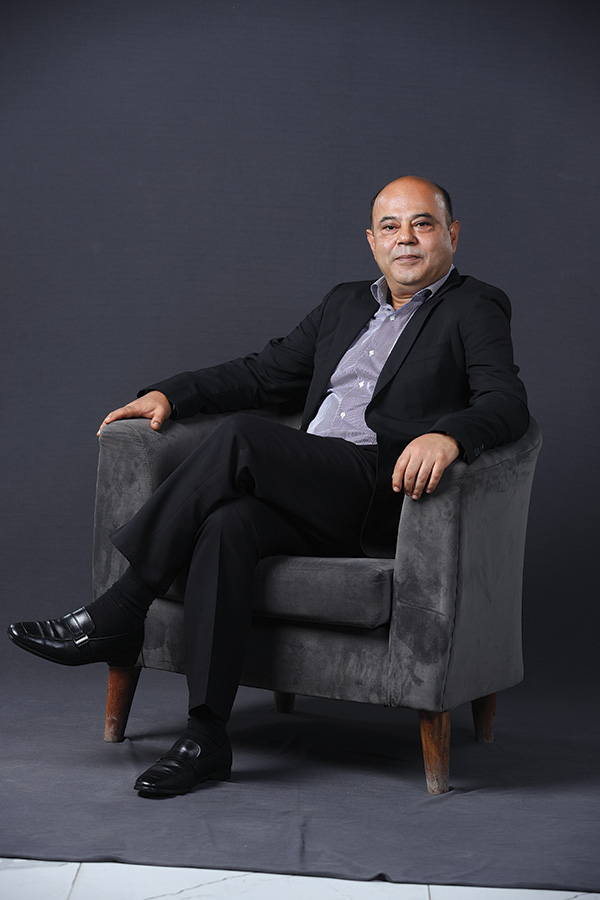
Cabinet Shrestha
Board Member, NAIMA
Managing Director, Agni Inc
When did you enter the automobile business and how has it evolved over the years?
We have been in the automobile business for over three decades, witnessing its evolution from the early overland vehicles of the 60s/70s ‘hippie trail’ to today’s new generation of internal combustion engines and electric vehicles. Looking back, it is clear just how much the industry has transformed.
Which are the automobile brands that you deal in?
We represent the Mahindra range of PickUp, SUV and EVs in Nepal.
Is there any policy that you would like to see amended or introduced for the betterment of the automobile industry in Nepal?
The automobile policy needs to be more relevant to our local context. Despite our significant reliance on roadways, we ironically have one of the lowest per capita vehicle ownership rates. Therefore, we require a more conducive and consistent auto policy that addresses electric vehicles, hybrids and internal combustion engine automobiles.
NAIMA, as the representative body for both vehicle importers and local assemblers in Nepal, is well-positioned to take the lead in setting and standardising safety and quality benchmarks in the automotive sector. Nepal currently lacks a comprehensive and enforceable set of safety standards for vehicles, which has led to inconsistencies in the quality of both imported and locally assembled models. NAIMA can also play an important role in ensuring that companies meet the government’s requirement of maintaining authorised service centres, which helps guarantee after-sales support and enhances public trust in the brands
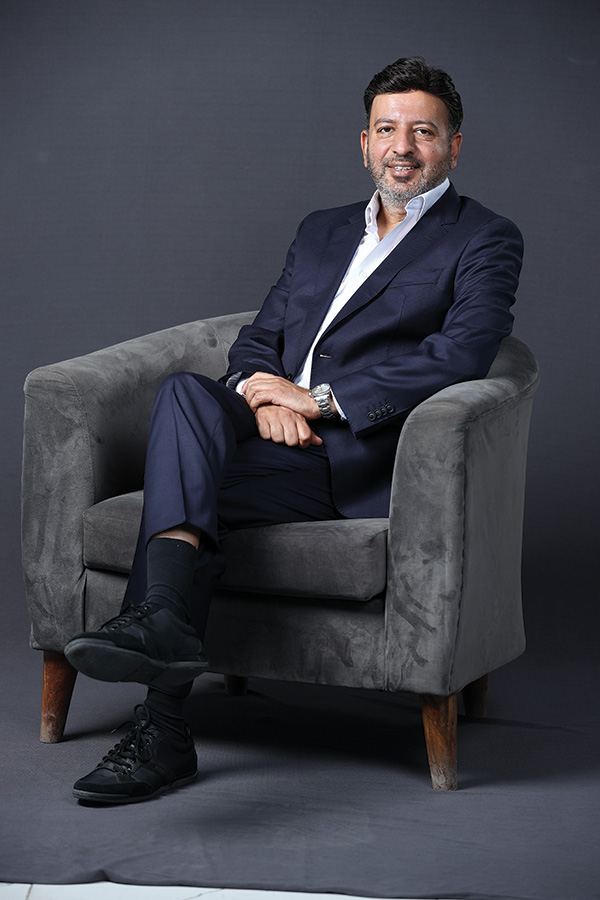
Hemant Golchha
Board Member, NAIMA
Director, Shangtila Motors
When did you enter the automobile business and how has it evolved over the years?
Our family has been in the automobile business for almost 60 years now. I started my automobile business journey ten years ago with Peugeot.
Which are the automobile brands that you deal in?
Today, we represent Peugeot, Citroen and Leapmotor of Stellantis Group.
Is there any policy that you would like to see amended or introduced for the betterment of the automobile industry in Nepal?
Nepal’s automobile business has matured significantly and has shown remarkable adaptability to electric vehicles. I believe we are moving in the right direction. Government policies should be simple and straightforward, with consistency being paramount for long-term stability.
How can NAIMA ensure that its members are aligned when it comes to lobbying for taxation or customs policy reforms?
NAIMA’s efficacy in lobbying for consistent taxation and customs policy reforms in Nepal’s automobile sector relies heavily on aligning its diverse membership. Nepal’s automotive landscape, particularly with the rapid adoption of electric vehicles, needs predictable policies to ensure long-term stability and growth. Transparent communication and data-driven advocacy are paramount. Nepal’s vehicle tax structure is intricate and prone to frequent changes, impacting all segments from ICE vehicle importers to EV distributors.
NAIMA is focused more on medium to long term policy development rather than short-term plans. We are working on creating a long-term vision that supports both importers and local assemblers. Our goal is to listen to all our members, understand their challenges and priorities, and craft strategies that promote a sustainable business environment. Ultimately, our approach is to balance the needs of businesses with the overall interest of the Nepali economy. We want to ensure that both distributors and assemblers can grow in a way that is responsible and future-ready

Nikunj Agrawal
Board Member, NAIMA
Executive Director, Paramount Motors
When did you enter the automobile business and how has it evolved over the years?
I entered the automotive business about 17 years ago. At that time, ICE vehicles completely dominated the Nepali market. Since then, we have seen a rapid shift toward electric vehicles, especially in the four-wheeler segment. Nepal now stands out globally for its high rate of EV adoption.
Which are the automobile brands that you deal in?
In the passenger vehicle segment, we work with several well-established global brands. These include MG, Mazda, Mercedes-Benz, Renault, Volkswagen and Great Wall Motors.
How do you see NAIMA helping to build a unified voice for both importers and manufacturers in a market as fragmented as Nepal’s?
NAIMA was formed to represent the entire automobile ecosystem – importers, manufacturers and assemblers alike. In fact, many importers today are also involved in local assembly, especially in the two-wheeler and four-wheeler segments. This blend of roles is a good sign. It brings investment into the country, creates jobs and signals confidence in Nepal’s economy to global brands.
When international companies choose to assemble CKD or SKD units in Nepal, it reflects their trust in our market. That, in turn, helps boost consumer confidence in locally assembled vehicles. NAIMA’s role is to support both CBU (completely built units) and CKD assembly equally. The aim is to foster cooperation and development that benefits the entire sector and supports national economic growth.
Instead of a new policy or amendment, I would say what is really needed is consistency. Over the past 10 years, one of the biggest challenges we have faced is the unpredictability of government policies, especially around taxation and import regulations. Every year, we are left guessing about what direction the new budget or finance minister will take. That kind of uncertainty forces all of us in the industry to take decisions based on speculation, not strategy. Because of this, business planning, stock management and even investor confidence suffer. It is not just bad for us, it creates a distorted image of Nepal in the eyes of global manufacturers and causes cash flow inefficiencies that ultimately affect consumers

Nirakar Shrestha
Board Member, NAIMA
Executive Director, Laxmi Group
When did you enter the automobile business and how has it evolved over the years?
My journey in the automobile sector officially began in 2006 as a dealer for Hyundai in Nepal. A turning point came in 2009, when Laxmi Intercontinental was appointed the sole distributor for Hyundai. In 2024, we took a major step forward by beginning assembly of Hyundai vehicles in Nepal, in collaboration with Hyundai Motor Company. It was a proud moment, but for me, it is still just the beginning. Our long-term vision is to manufacture vehicles locally, not only for Nepal but potentially for export too.
Which are the automobile brands that you deal in?
We currently represent a good mix of brands that cater to different segments of the Nepali market. On the passenger side, we deal with Hyundai, BMW, Kaiyi and Forthing. Each brand speaks to a different type of customer, from entry-level vehicles and EVs to premium and luxury offerings.
What mechanisms will NAIMA use to resolve internal conflicts or competition among its members if there is any conflict?
We should promote a culture of mutual respect and healthy competition, not rivalry. Nepal’s market is still growing and there is room for everyone to thrive if we are focused on long-term development. Rotating leadership roles, equal representation of members regardless of brand size, and inclusive decision-making will help keep things transparent and balanced. At the end of the day, NAIMA exists to uplift the entire industry, not any single player.
NAIMA can be a facilitator and advocate with the government for supportive policies such as subsidies and grants, research and development, training and skill development. NAIMA can also develop collaborations with similar organisations and suppliers
When did you enter the automobile business and how has it evolved over the years?
I came into the automobile business in the commercial segment in 2009 and slowly moved into the passenger vehicle segment. The automobile sector is one of the highest revenue generating sectors for the government. Over the years, the industry trends indicate a shift from small cars and sedans to SUVs and crossovers. In the last few years, we have witnessed a sudden shift from internal combustion engine vehicles to electric vehicles, which also means increased competition, mostly from Chinese brands.
Which are the automobile brands that you deal in?
We presently deal in Nissan, Omoda & Jaecoo and Zeekr.
Is there any policy that you would like to see amended or introduced for the betterment of the automobile industry in Nepal?
For the betterment of the automobile industry in Nepal, several policy amendments and introductions would be highly beneficial. Firstly, a review of the Hire Purchase policy for auto loans is crucial, as favourable financing conditions can significantly stimulate vehicle demand and make ownership more accessible.
Secondly, an increased network of charging stations is essential, particularly to support the growing adoption of electric vehicles and alleviate range anxiety for consumers. Also, the ongoing development and improvement of road infrastructure are paramount, as well-maintained roads not only enhance safety and reduce vehicle wear but also facilitate efficient transportation across the country.
Lastly, the introduction of robust vehicle testing equipment and associated policies would ensure higher standards of vehicle fitness, roadworthiness and environmental compliance, contributing to overall road safety and reduced pollution. These integrated policy changes would create a more conducive environment for the automobile sector’s growth and modernisation in Nepal.
Whether a company is new or established, the rules should be the same. What NAIMA offers is a platform for long-term policy advocacy. We are working toward a 10-year policy framework that ensures stability and transparency for all players in the sector, whether big or small. We aim to provide clarity on government direction, help safeguard investments, and promote ethical practices like tax compliance and environmental responsibility. We are also committed to supporting infrastructure development and improving road safety. So, for new entrants, NAIMA offers a reliable, forward-looking structure that makes it easier to plan, invest and grow in Nepal’s auto market

Saurabh Jyoti
Board Member, NAIMA
Chairman, Padma Jyoti Group
Which are the automobile brands that you deal in?
We exclusively work with Honda. We handle their entire range – two-wheelers, four-wheelers, power products, and we are expanding into agricultural and farm equipment as well.
Is there any policy you would like to see amended or introduced for the betterment of Nepal’s automobile industry?
First, the taxation on automobiles is extremely high because the government still treats them as luxury items rather than necessities. But in a country like Nepal, where we do not have reliable mass transportation – no rail, limited bus services – motorcycles and cars are how people get around. These should be treated as essential and taxes should reflect that reality.
Second, on the subject of clean energy vehicles, current incentives are limited only to battery electric vehicles. But there are other technologies like hydrogen fuel cells, solar-powered systems, hybrids that also contribute to lower emissions. These should be included in the same tax incentive schemes. If hydrogen or hybrid vehicles are taxed at the same rate as conventional internal combustion vehicles, their cost becomes prohibitively high. We need a policy shift that supports all clean energy options, not just EVs.
Do you believe there is space for both NADA and NAIMA to coexist effectively, or do you foresee overlapping roles and friction?
I believe both organisations serve distinct purposes and can absolutely coexist.
One area that needs serious attention is manufacturing and assembly. There is been some push for value addition and backward integration but what is lacking is a clear road map from the government. We need proper policy direction and incentives. Countries like Sri Lanka and Bangladesh have made significant progress in value addition, supported by proactive government policies. Our parent company is ready to support us in this but with the current duty structure and market size, it is not viable. If the government can offer a well-defined plan, we can genuinely begin to create more value locally
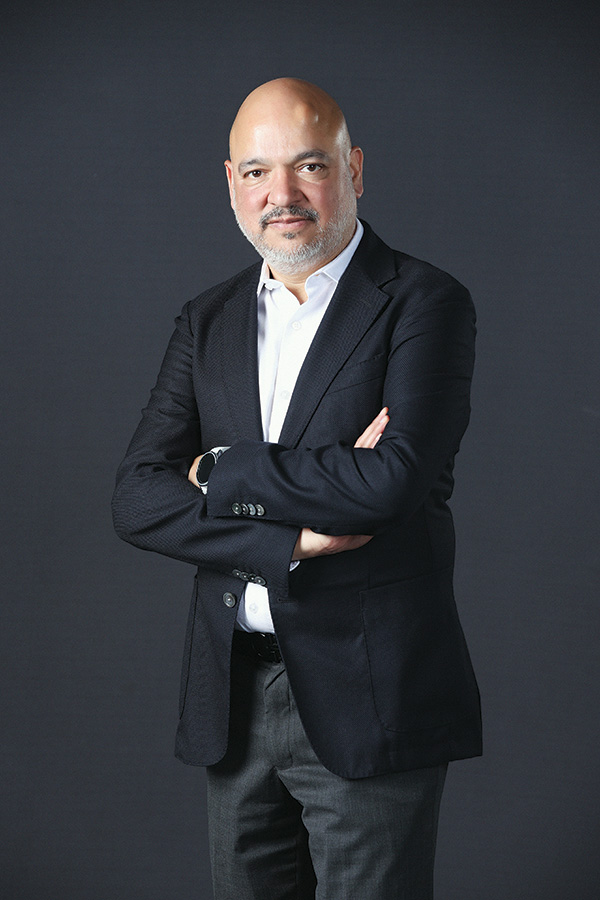
Shekhar Golchha
Board Member, NAIMA
Chairman and MD, Golchha Group
When did you enter the automobile business, and how has it evolved over the years?
We have been in the industry for 26 years now. We started with Bajaj Motorcycles at a time when it was an unknown brand here, maybe just 1% or 2% of the market. Over the years, we have worked hard to build the brand and develop infrastructure. Today, we have a service and spares network that reaches 73 out of Nepal’s 77 districts. From Kakarbhitta to Mahendranagar and up to Jomsom, you will find a Bajaj service centre. Along the way, we have expanded into horizontal integration with other brands like KTM, Triumph and soon Chetak. We also deal with automotive components like Servo lubricants and Eurogrip tyres.
How important is cross-border cooperation for NAIMA, particularly in terms of sourcing, partnerships, or policy alignment with India and China?
It is absolutely critical. Most of our two-wheeler imports come from India and four-wheelers are now split between India and China. Coordination with both countries is essential, especially with India, where we need to be aligned on policy and technical standards like the transition from BS4 to BS6. It is important for NAIMA to work closely with Society of Indian Automobile Manufacturers (SIAM), our Indian counterpart, to ensure a smooth transition period for manufacturers and dealers in Nepal. Looking ahead, as more companies consider local assembly and manufacturing, cross-border collaboration will only become more important.
NAIMA is poised to play a pivotal role in advancing technological innovation and digitisation within the Nepali auto sector. Its efforts will include advocating for favourable policies that foster the development of the local auto industry. NAIMA can also forge partnerships with online vehicle sale platforms to facilitate digital showrooms and electronic payment systems. Furthermore, enhancing consumer awareness and providing training for EV and high-tech vehicle repair is crucial. Collaborating with Nepal Electricity Authority and the private sector to expand the nationwide charging station network is another key initiative. Finally, NAIMA can promote the adoption of smart parking and AI-based traffic solutions to improve urban mobility and traffic management
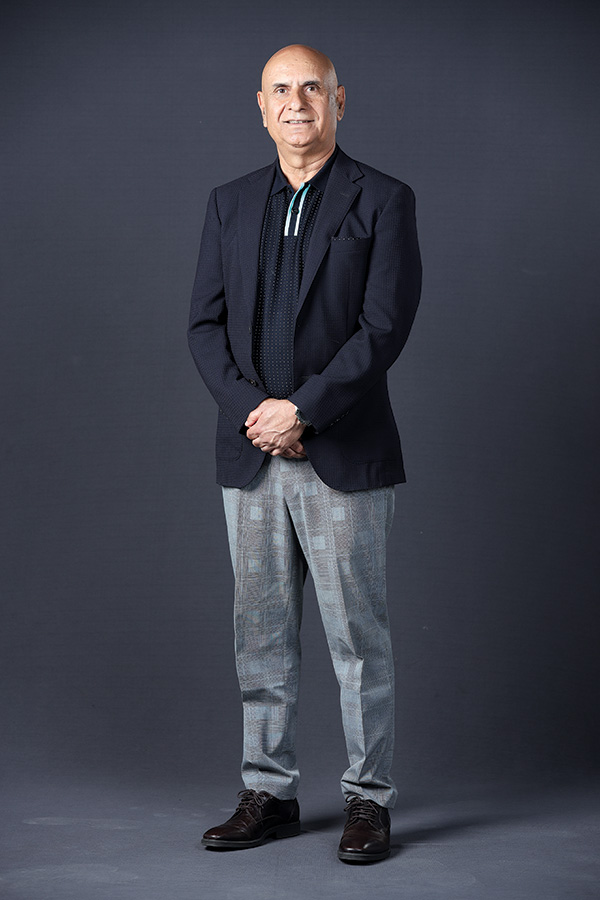
Suhrid Ghimire
Board member, NAIMA
Chairman, Continental Trading Enterprises
Which are the automobile brands do you deal in?
I started my automobile business in 1995. We are the authorised distributer for Korean brand Kia and Japanese brand ISUZU for Nepal. We have more than 15 sales and service touchpoints in Nepal.
Is there any policy that you would like to see amended or introduced for the betterment of the automobile industry?
For the betterment and sustainable growth of the automobile industry in Nepal, several policy adjustments are crucial. Primarily, a reduction in the currently high import taxes would make vehicles more affordable, shifting their perception from luxury goods to a necessity for national development. Then there is a strong need for stable and predictable regulations concerning vehicle imports and emissions. This stability would prevent sudden policy shocks and significantly encourage both private and foreign investments. Additionally, balanced incentives for electric vehicles (EVs) and hybrid vehicles are essential, including tax breaks and robust charging infrastructure development. Encouraging local assembly and manufacturing is also vital to reduce dependency on imports. Lastly, the implementation of better financing policies with lower interest rates for auto loans, applicable to both EV and internal combustion engine vehicles, would greatly benefit consumers and stimulate market growth.
Being on the board myself and probably the youngest member, I can confidently say that NAIMA is a platform where everyone is encouraged to speak. From what I have seen, the members are genuinely open to hearing different viewpoints, even when it does not directly benefit them. The culture within NAIMA so far has been collaborative and I believe that will continue. This inclusiveness is crucial for the development of the industry as a whole, especially in a market as diverse and fragmented as Nepal

Udayan Kabra
Board Member, NAIMA
Director, Omni Group
Which are the automobile brands that you deal in?
As a group, we have been involved in financing commercial vehicles for over 35 years. But in terms of directly importing and selling vehicles, we began in 2014, Besides BharatBenz trucks, we also work in auxiliary sectors like tyres and lubricants. Additionally, we deal in Swaraj tractors, which are agricultural tractors owned by Mahindra & Mahindra, and are active in certain regions of Nepal.
Is there any policy that you would like to see amended or introduced for the betterment of the automobile industry in Nepal?
One key area that needs attention is the axle load regulations. The maximum permissible axle loads in Nepal are still lower than global standards. Similarly, the cap on the maximum GVW for vehicles should also be removed. These limitations not only restrict operational efficiency but also discourage the introduction of better technology and more capable vehicles into the market.
How do you view the government’s fluctuating import policies and how NAIMA should respond to protect business continuity?
In commercial vehicles, we have not seen drastic changes but there have been shifts. For instance, last year the government removed a 5% import benefit on vehicles imported from India and increased road tax from 7% to 10%. While these might seem minor, they have an impact.
But what is most damaging is unpredictability. Frequent changes in import policies make it difficult for businesses, and even customers, to plan. As for NAIMA, we should strongly advocate for more stable and consistent policies.
I believe policies should not be tailored to an individual, business or group. Instead, policy should reflect the singular voice of the people. Every policy needs to be stable and protective, otherwise today’s businesses could collapse tomorrow. To prevent this, we require long-term, stable policies along with a declaration of a business’s operational history and stability. This approach safeguards businesses and simplifies processes for both the public and the government

Yamuna Shrestha
Board Member, NAIMA
Managing Director, Cimex Inc
When did you enter the automobile business and how has it evolved over the years?
We entered the automobile industry in 2015/16 with BYD, a period when the focus was shifting towards new energy vehicles. For a dependent nation like ours, new energy vehicles hold significant importance. Our reliance on fossil fuels has led to a trade deficit, a problem new energy can address. We believed we could contribute to the new energy vehicle sector, and with collective effort, approximately 60-65% of people are now interested in passenger vehicles. This represents a substantial shift for Nepal. Additionally, in recent years, a high number of educated young people with an interest in technology are contributing to this evolving landscape in Nepal.
Do you think Nepal is ready for a policy push towards hybrid vehicles and how will NAIMA support that transition?
We aim to advance in line with evolving times and market demands. Globally, there is a significant demand for electric vehicles and plug-in vehicles are also part of this energy-efficient category. I believe the government should establish regulations for such vehicles. Despite a clear demand for plug-in vehicles, the government currently holds a different perspective on them. While these vehicles existed before, current iterations are so distinct that they are not actively promoted. I think this is due to a lack of proper clarification regarding what a plug-in vehicle entails, leading to its absence in the current budget plan. We, at NAIMA, intend to address this. We will provide a definition and outline usage methods for plug-in vehicles, and after clarifying these misunderstandings, we are confident we can facilitate the introduction of plug-in vehicles into the country.
NAIMA, through its Research, Data & Media Committee, will collect, analyse and publish data on key trends in Nepal’s mobility sector, including vehicle imports, emissions, consumer behaviour and technology adoption. It will release regular reports, whitepapers and an annual Mobility Insights Report to support evidence-based policymaking and industry planning. A digital and physical knowledge hub will also be developed to host publications, dashboards and curated resources. In addition, NAIMA will collaborate with like-minded agencies, relevant government entities and development partners working in this space to enhance data quality, share insights and align efforts for greater impact across the sector

Raj Kumar Dulal
Executive Director
Nepal Automobile Importers and Manufacturers Association
Raj Kumar Dulal is the Executive Director of Nepal Automobile Importers and Manufacturers Association (NAIMA), a platform that aims to bring together importers and manufacturers to shape the future of mobility in Nepal. With over 15 years of experience across the development sector, private enterprises and diplomatic missions, he brings a well-rounded perspective to an evolving industry. At NAIMA, he oversees operations, drives collaboration with stakeholders, and steers the association’s efforts in promoting innovation, policy reform, sustainability and inclusive growth in the automobile sector.
Before joining NAIMA, Dulal managed USAID Nepal’s education portfolio while working at the US Embassy in Kathmandu, overseeing major programmes across the country. He also has a background in entrepreneurship, having founded a Medical Transcription firm and operating small-scale agro-enterprises focused on sustainable farming and rural employment. His academic achievements include an MPhil in Education (Development Studies) with distinction, and he is currently pursuing a PhD.
At NAIMA, he plays a central role in integrating the association’s five strategic pillars: policy advocacy, innovation, sustainability, education and workforce development, and consumer empowerment. He leads key initiatives like the NAIMA Nepal Mobility Expo and the Monthly Mobility Sambad, aiming to build a stronger, more resilient mobility ecosystem in Nepal.
In an interview with Business 360, he shared that he views mobility not just as a matter of transportation but as a pathway to national progress. Excerpts:
What are your top three priorities for NAIMA in its first year?
Our immediate focus is on operationalising NAIMA effectively. First, we are establishing a fully functional Secretariat with strong office systems and infrastructure. Second, we are executing strategic activities driven by our seven specialised committees, each guided by clear Key Performance Indicators (KPIs). Third, we are launching flagship initiatives like the Monthly Mobility Sambaad and NAIMA Nepal Mobility Expo - the largest auto expo in the country - to foster stakeholder engagement and policy dialogue.
How do you plan to balance the interests of importers and manufacturers?
NAIMA’s inclusive leadership structure ensures that both importers and manufacturers have a voice in shaping the association’s direction. We maintain this balance through active engagement in our committees and structured dialogue platforms, where diverse perspectives are brought together to develop shared strategies. Our role is to foster collaboration, encourage consensus and implement initiatives that reflect the broader priorities of Nepal’s mobility sector.
What steps is NAIMA taking to engage with government agencies?
NAIMA’s approach is centred on working closely with government agencies to align its initiatives with national development priorities. The formation of its seven specialised committees led by industry leaders reflects not only the strategic needs of the mobility sector but also broader national goals – covering areas such as policy reforms, infrastructure, innovation, consumer awareness and workforce development. These committees engage in structured dialogue, submit policy recommendations, and collaborate on public initiatives, contributing to both the shaping of regulatory frameworks and the implementation of programmes that support public education and capacity building. Through this integrated model, NAIMA positions itself as a proactive and trusted partner in advancing Nepal’s mobility agenda and long-term development.
What kind of internal governance has NAIMA set up?
NAIMA operates with a transparent and inclusive governance structure led by an executive committee which serves as the association’s board. The President is selected through consensus, reflecting NAIMA’s collaborative leadership approach. Seven specialised committees support the board by driving key initiatives aligned with strategic KPIs. A professionally staffed secretariat has been established to implement the association’s vision and mission. While it works in close coordination with the board and committees, the secretariat operates independently in its day-to-day functions to ensure efficient execution. Governance is further supported by an Annual General Assembly, a shared Code of Conduct, and regular meetings with documented reporting. NAIMA remains committed to strengthening its systems for accountability, inclusiveness and effective policy advocacy.
How is it positioning itself in the EV infrastructure and policy space?
We support informed policy dialogue through research and stakeholder engagement, without promoting any specific technologies or brands. Our role is to facilitate balanced discussions and readiness for future mobility solutions.
What kind of data and research will NAIMA produce?
NAIMA, through its Research, Data & Media Committee, will collect, analyse and publish data on key trends in Nepal’s mobility sector, including vehicle imports, emissions, consumer behaviour and technology adoption. It will release regular reports, whitepapers and an annual Mobility Insights Report to support evidence-based policymaking and industry planning. A digital and physical knowledge hub will also be developed to host publications, dashboards and curated resources. In addition, NAIMA will collaborate with like-minded agencies, relevant government entities and development partners working in this space to enhance data quality, share insights and align efforts for greater impact across the sector.
How will it support skills development in the auto sector?
NAIMA is committed to strengthening human capital in the mobility sector through its Workforce Training & Best Practices Committee. The association is coordinating certification programmes, training-of-trainers (ToT) initiatives, and curriculum upgrades in collaboration with technical institutes and universities. These efforts aim to address skill gaps across technician, mechanic and engineering roles, particularly in areas like Internal Combustion Engine (ICE) and Electric Vehicle (EV) assembly, maintenance and software. NAIMA also promotes global best practices, workplace safety standards and employee welfare across service centres. These initiatives directly support national priorities such as ‘Make in Nepal’ and ‘Stay in Nepal’, while contributing to a more skilled, competitive and future-ready workforce.
Are there any current collaborations or partnerships?
Yes, we are actively collaborating with the Government of Nepal alongside a growing network of academic institutions, financial bodies, donor communities and national-international mobility organisations. These strategic partnerships help us build institutional capacity, foster innovation and ensure that Nepal’s mobility sector remains aligned with global best practices. Through shared knowledge and joint initiatives, we continue to advance a unified and future-ready vision for mobility across the country.
What role will NAIMA play in creating an investor-friendly environment?
As a non-profit distributing organisation, NAIMA’s role is to facilitate an investor-friendly ecosystem within Nepal’s mobility sector. We support the development of predictable policy frameworks, promote structured operations and provide trustworthy data to encourage long-term investment. Through programme-led strategies and committee-driven interventions, NAIMA helps bridge stakeholders – from public institutions to private investors – and ensures that growth initiatives are both inclusive and future-ready. Our focus is to enable smooth, well-informed collaboration and decision-making that benefits the sector and the country as a whole.
What does success look like for NAIMA in five years?
In five years, success for NAIMA means that our vision, ‘Empowering Growth Through Mobility’, and our mission, ‘Ensuring Mobility for All’, have been realised through measurable impact. As a trusted, well-governed institution, we have driven transformative policy reforms, built a robust and skilled workforce, and created equitable mobility solutions that reach every corner of Nepal. Our flagship programmes have gained national recognition, industry collaboration has flourished, and our efforts have made Nepal a more attractive destination for sustainable mobility investment. With all key performance indicators achieved across our committees, NAIMA now stands as a thought leader, regionally and globally, guiding the future of smart, safe and inclusive mobility. Our journey is one of collective growth, powered by data, integrity and meaningful stakeholder engagement.

